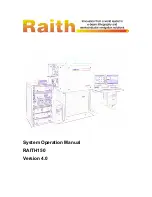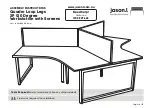
1
MAC
™
Multi-Lumen Central Venous Access Product
Safety and Ef
fi
cacy Considerations:
Do not use if package has been previously opened or damaged.
Warning: Read all package insert warnings, precautions, and
instructions prior to use. Failure to do so may result in severe
patient injury or death.
Do not alter the catheter or any other kit/set component during
insertion, use, or removal.
Procedure must be performed by trained personnel well
versed in anatomical landmarks, safe technique, and potential
complications.
Precaution: When using Central Venous Catheterization
Product with Contamination Guard for use only with MAC
™
Multi-Lumen Central Venous Access Device (MAC
™
companion
product), clinicians must be aware of the potential complication
of Cardiac Tamponade (see complications warning included in
all Arrow
®
Central Venous Catheter Products) (refer to Fig. 1).
Fig. 1
Indications for Use:
The Arrow
®
Central Venous Access Product permits venous access
and catheter introduction to the central circulation.
Contraindications:
None known.
Warnings and Precautions:*
1. Warning: Sterile, Single use: Do not reuse, reprocess
or resterilize. Reuse of device creates a potential risk of
serious injury and/or infection which may lead to death.
2. Warning: Practitioners must be aware of complications
associated with percutaneous catheter introduction
including vessel wall perforation,
17
pleural and mediastinal
injuries,
1,13
air embolism,
6,9,12,14
sheath embolism, thoracic
duct laceration,
3
bacteremia, septicemia, thrombosis,
4
inadvertent arterial puncture,
7
nerve damage, hematoma,
hemorrhage,
5
dysrhythmias and occlusion.
3. Warning: Do not apply excessive force in removing guide
wire, dilator or catheter. If withdrawal cannot be easily
accomplished, a chest x-ray should be obtained and further
consultation requested.
4. Warning: The practitioner must be aware of potential air
embolism associated with leaving open needles, sheaths, or
catheters in venous puncture sites or as a consequence of
inadvertent disconnects. To lessen the risk of disconnects,
only securely tightened Luer-Lock connections should
be used with this device. Follow hospital protocol for all
sheath and side port maintenance.
5. Warning: Hemostasis valve must be occluded at all times
to minimize the risk of air embolism or hemorrhage. If
catheter introduction is delayed, or catheter is removed,
temporarily cover valve opening with sterile-gloved
fi
nger until catheter or obturator is inserted. Use Arrow
®
obturator, either included with this product or sold
separately, as dummy catheter with hemostasis valve
assembly. This will ensure that leakage does not occur and
inner seal is protected from contamination.
14
6. Warning: Passage of the guide wire into the right heart
can cause dysrhythmias, right bundle branch block,
7
and a
perforation of the vessel wall, atrial or ventricular.
7. Warning: Practitioners must be aware of the potential for
entrapment of guide wire by any implanted device in the
circulatory system (ie. vena cava
fi
lters, stents). Review
patient’s history before catheterization procedure to assess
for possible implants. Care should be taken regarding the
length of spring-wire guide inserted.
2
It is recommended
that if patient has a circulatory system implant, catheter
procedure be done under direct visualization to minimize
the risk of guidewire entrapment.
8. Warning: Products containing sharps safety feature
components are designed to reduce the risk of accidental
needle and sharps related sticks. Care must still be taken
to minimize the risk of sharps injury. Clinicians must
adhere to state/federal OSHA standards for blood borne
pathogens when starting, discontinuing, or maintaining a
central venous catheter to minimize the risk of exposure.
9. Warning: Due to the risk of exposure to HIV (Human
Immunode
fi
ciency Virus) or other blood borne pathogens,
health care workers should routinely use universal blood
and body-
fl
uid precautions in the care of all patients.
10. Precaution: For blood sampling, temporarily shut off
remaining port(s) through which solutions are being infused.
11. Precaution: Do not suture directly to the outside diameter
of the catheter to minimize the risk of cutting or damaging
the catheter or impeding catheter
fl
ow.
12. Precaution: Indwelling catheters should be routinely
inspected for desired
fl
ow rate, security of dressing, correct
position and for proper Luer-Lock connection.
13. Precaution: Maintain the insertion site with regular
meticulous redressing using aseptic technique.
14. Precaution: Alcohol and acetone can weaken the structure
of polyurethane materials. Check ingredients of prep
sprays and swabs for acetone and alcohol content.
Acetone: Do not use acetone on catheter surface. Acetone
may be applied to skin but must be allowed to dry
completely prior to applying dressing.
Alcohol: Do not use alcohol to soak catheter surface or to
restore catheter patency. Care should be taken when instilling
drugs containing high concentration of alcohol. Always allow
alcohol to dry completely prior to applying dressing.
15. Precaution: Some disinfectants used at the catheter insertion
site contain solvents, which can attack the catheter material.
Assure insertion site is dry before dressing.
SZ11142111A0.indb Sec1:1
SZ11142111A0.indb Sec1:1
8.2.2013 10:08:21
8.2.2013 10:08:21



































